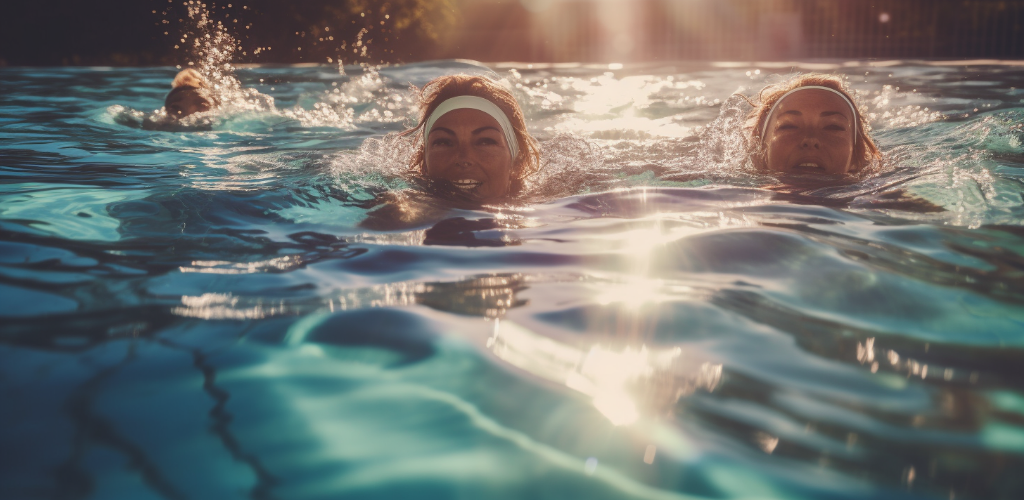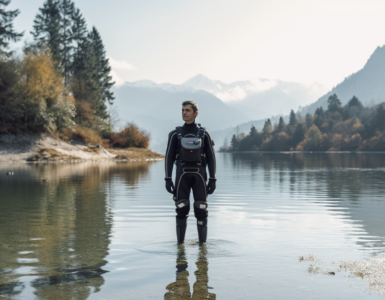Have you ever wondered why there are so many types of swimming strokes? Why not just swim in the most straightforward way possible? Well, swimming is more than just moving in water. It’s a complex activity that involves a variety of styles and techniques, each with its own unique benefits and challenges. Understanding these different strokes enhances not only your swimming skills but also your overall experience in the water.
Imagine being in a pool and having the ability to switch between different strokes, each offering a unique rhythm and feel. It’s not just about swimming for survival, fitness or competition, it’s also about enjoying the water in all its splendid variety.
Different strokes for different folks, as they say. So, let’s dive in and explore the diverse world of swimming strokes!
Why Knowing Different Strokes Matters
So, why bother learning various swimming strokes? Isn’t one enough? Well, not quite. Each stroke offers different benefits and challenges, contributing to improved endurance, flexibility, and muscular strength. They work different muscle groups and offer varying degrees of intensity. Moreover, these strokes can also enhance the swimming experience, making the sport more enjoyable and engaging.
By learning different strokes, you not only diversify your swimming repertoire but also equip yourself with the skills needed to face various water-related scenarios. Pretty cool, right?
The Four Basic Swimming Strokes
When it comes to swimming, there are four strokes that form the foundation of the sport – freestyle, butterfly, breaststroke, and backstroke. Each of these strokes has its own distinct style, rhythm, and technique, offering a unique way to traverse the water.
The freestyle stroke, also known as the front crawl, is the fastest and most commonly used stroke. The butterfly stroke, with its distinctive undulating motion, is the most challenging but offers a full-body workout. The breaststroke is unique in its simultaneous arm and leg movements and is often taught to beginners. Lastly, the backstroke, as the name suggests, involves swimming on your back and is a great way to strengthen back muscles.
Excited to know more about these strokes? Stay tuned for the upcoming sections where we’ll dive deeper into each of these strokes.
Stroke Style 1: Freestyle (Front Crawl)
Have you ever watched a swim race and noticed how most swimmers seem to glide through the water with ease and speed? That’s the freestyle stroke for you! Also known as the front crawl, it’s the fastest and most efficient of all the swimming strokes. The freestyle stroke is often the first style taught to beginners because of its simplicity and speed. But don’t let that fool you. Like all swimming strokes, mastering the freestyle requires technique and practice.
Key Techniques in Freestyle
So, what are the key elements in performing freestyle? Let’s break it down. First, there’s the flutter kick. This involves alternating your feet in a quick up-and-down motion, keeping your legs mostly straight with slight bends at the knees. The power comes from the hips, not the knees. This kick helps propel you forward while maintaining your balance in the water.
Then there’s the alternating arm movement. One arm reaches forward under the water, pulling down and back, while the other recovers above the water. This continuous, alternating motion helps you move forward swiftly and smoothly. The breath is taken on the side of the recovering arm, ensuring continuous breathing without interrupting the stroke.
Stroke Style 2: Butterfly
Now, let’s turn our attention to the butterfly stroke. This stroke might be the most challenging to learn and execute, but it’s also one of the most rewarding. The butterfly stroke is a symphony of power, grace, and timing. It provides a full body workout, engaging muscles from your shoulders down to your calves. The beauty of the butterfly stroke is in its unique body movements, with both arms moving simultaneously in a windmill motion and the legs performing a dolphin kick.
Mastering the Butterfly Stroke
So, how does one master the butterfly stroke? The key lies in the dolphin kick and the wave-like body motion. The dolphin kick involves both legs moving together in a whipping motion, similar to how a dolphin or mermaid might swim. This kick provides the propelling force in the butterfly stroke.
The wave-like body motion, on the other hand, is what makes the butterfly stroke truly unique. As you pull and push underwater with your arms, your body should undulate, mimicking the movement of a dolphin or a fish. This body wave, when performed correctly, allows for a smooth and efficient butterfly stroke. It’s challenging, yes, but the sense of achievement when you finally master it is absolutely worth it!
Stroke Style 3: Breaststroke
Have you ever wondered why the breaststroke is often the first swimming style taught to beginners? Unlike the freestyle or butterfly, the breaststroke allows the swimmer to keep their head above water for most of the stroke. This makes it an ideal starting point for those just dipping their toes into the world of swimming. Don’t let its beginner-friendly reputation fool you, though. The breaststroke may be the slowest of the competitive strokes, but it offers an excellent aerobic workout and is a test of timing and technique.
Breaststroke Techniques
So, how exactly do you execute the breaststroke? It’s all about the frog kick and simultaneous arm movements. Let’s break it down:
- Frog Kick: The legs are drawn up towards the body, then kicked out and back in a circular motion, much like a frog swimming in the water. This kick provides the majority of the propulsion in the breaststroke.
- Simultaneous Arm Movements: The arms move in unison, starting at the front of the body, pulling out to the sides, and then pushing back together to the front. This helps with propulsion and balance.
Remember, the key to a successful breaststroke is synchronization. The arms and legs must work together to create a smooth, continuous motion.
Stroke Style 4: Backstroke
Next up is the backstroke, the only one of the four primary strokes that requires swimmers to be on their backs. This unique positioning offers certain advantages, such as excellent back muscle conditioning and the ability to breathe freely. However, it also presents its own set of challenges, like not being able to see where you’re going! Despite this, with practice, backstroke can be a relaxing and enjoyable stroke.
Essential Backstroke Techniques
While it may seem daunting at first, mastering the backstroke comes down to two main techniques: the flutter kick and the windmill arm motion.
- Flutter Kick: Much like the freestyle, the backstroke employs a flutter kick. The legs kick in an alternating fashion, with one leg kicking down while the other kicks up. This continuous motion helps maintain speed and stability.
- Windmill Arm Motion: The arms move in a large circular motion, similar to the blades of a windmill. One arm is lifted out of the water and reaches back to enter the water straight and palm first, while the other arm is pushing water towards the feet. This alternating motion provides propulsion.
When performed correctly, the backstroke is a fluid and elegant stroke. So, why not give it a try during your next swim?
Lesser-Known Swimming Strokes
While the four basic strokes are the most common, there are also several other interesting and useful swimming strokes that are worth learning. These strokes may not be as popular or well-known, but they can offer their own unique benefits and challenges. Have you ever heard of the sidestroke or the combat sidestroke?
- Sidestroke: This stroke is performed on the side with asymmetric leg movements similar to scissors and alternating under and over-arm strokes. It’s an excellent stroke for lifesaving purposes and endurance swimming.
- Combat Sidestroke: This stroke is a modification of the traditional sidestroke. It was developed by the military to enable soldiers to swim with a full load of gear. The combat sidestroke is efficient, quiet, and can be used to navigate through the water with minimal energy.
Choosing the Right Swimming Stroke
Now that you’re familiar with all these swimming strokes, how do you choose the right one for you? The answer can depend on several factors, including your swimming ability, your fitness goals, and your personal preferences.
For beginners, the freestyle or breaststroke might be a good place to start because of their simplicity. If you’re looking for a full-body workout and are up for a challenge, why not try the butterfly stroke? If you want to improve your back muscles and like the idea of swimming on your back, the backstroke could be your stroke of choice. And, of course, there’s always the less common sidestroke and combat sidestroke to consider if you’re looking for something a bit different.
Conclusion: Dive into Diversity
To wrap up, it’s clear that there’s a lot more to swimming than just moving through the water. Different strokes offer different benefits and challenges, and they can all help you become a more skilled and versatile swimmer.
So why not dive in and try a few different strokes? Whether you’re swimming for fun, fitness, or competition, learning a variety of strokes can enhance your swimming experience and make it even more enjoyable. You might just find a new favorite stroke!
| Stroke | Key Features | Benefits | Techniques |
|---|---|---|---|
| Freestyle (Front Crawl) | Fast and efficient | Increased speed and endurance | Flutter kick, alternating arm movements |
| Butterfly | Unique body movements | Full body workout | Dolphin kick, wave-like body motion |
| Breaststroke | Slowest competitive stroke | Excellent aerobic workout | Frog kick, simultaneous arm movements |
| Backstroke | Performed on the back | Excellent back muscle conditioning | Flutter kick, windmill arm motion |
| Sidestroke | Performed on the side | Good for endurance swimming and lifesaving | Scissor-like leg movement, alternating under and over-arm strokes |
| Combat Sidestroke | Modification of the traditional sidestroke | Efficient, quiet, energy-saving | Similar to sidestroke with added combat considerations |




